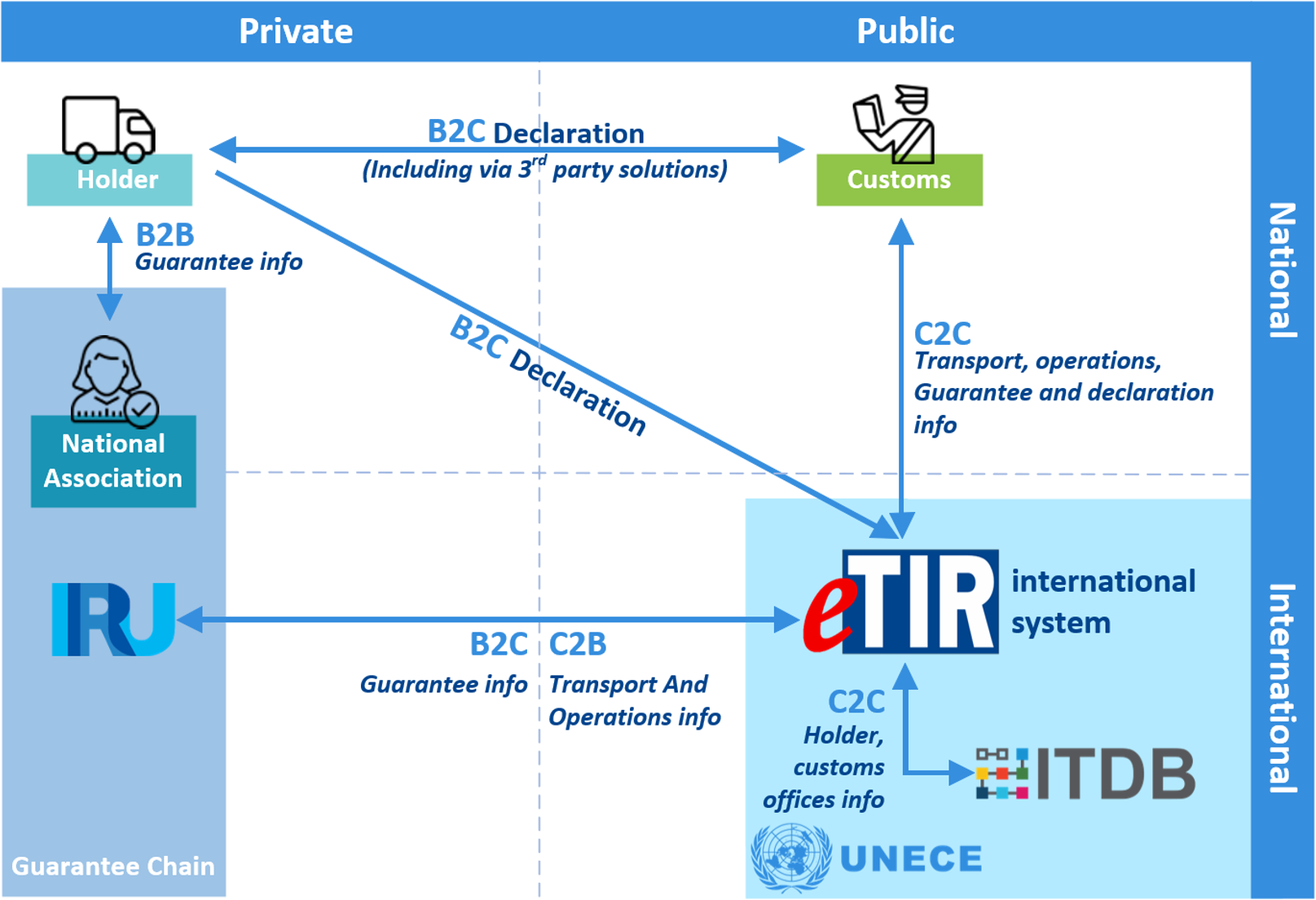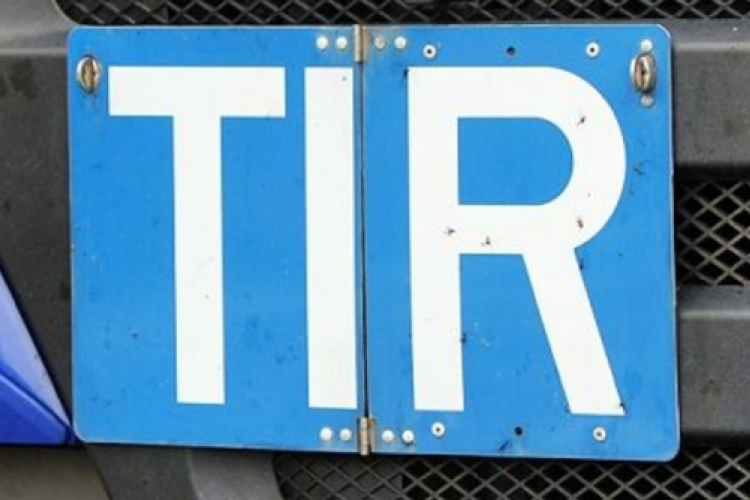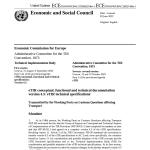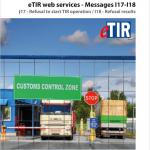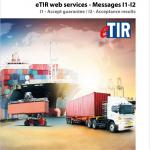The Customs authorities can perform the following roles in the TIR international system:
- Customs office of departure
- Customs office of exit (en route)
- Customs office of entry (en route)
- Customs office of destination
The eTIR international system interfaces with the guarantee chain and will ensure the management by customs of data on guarantees at the international level.
Moreover, in view of the fact that, within the eTIR system, the electronic direct exchange of information between the customs administrations located in the different Contracting Parties is neither currently feasible nor enforceable, it will facilitate the secure circulation of standardized information between customs administrations.
On the one hand, the guarantee chain transmits, to the eTIR international system, information on the guarantees it has issued to the holders so that they can be registered in the eTIR international system. The guarantee chain can also query at any time the status of guarantees it has issued and obtain related TIR transport information.
On the other hand, customs authorities use the eTIR international system to check the status of guarantees and to exchange information related to the TIR transport and to TIR operations. The management by customs of the data on guarantees and the secure exchange of data between national customs systems in relation to TIR transport information are therefore the two fundamental features of the eTIR international system.
Guidelines will also be provided to promote harmonization, especially in the context of the dialogue between the holder and customs authorities.
Communication, security and fallback solutions constitute other key features of the system.
Contracting Parties bound by Annex 11 shall connect their customs systems to the eTIR international system in line with the eTIR specifications.
Each Contracting Party is free to establish by which date it connects its customs systems to the eTIR international system. The date of connection shall be communicated to all other Contracting Parties bound by Annex 11 at least six months prior to the effective date of connection.
Advance TIR data and advance amendment data shall be submitted by the holder, or his or her representative, to the competent authorities of the country of departure and of the country in which an amendment to the declaration data is requested. Once the declaration, or the amendment, has been accepted in line with national law, the competent authorities shall forward the declaration data, or the amendment thereto, to the eTIR international system.
Advance TIR data and advance amendment data may be submitted either directly to the competent authorities or via the eTIR international system. Contracting Parties bound by Annex 11 shall accept the submission of advance TIR data and advance amendment data via the eTIR international system.
The competent authorities shall publish the list of all electronic means by which advance TIR data and advance amendment data can be submitted.
While accepting the declaration in the country of departure or an amendment to the declaration data in any country along the itinerary, competent authorities shall authenticate the advance TIR data, or the advance amendment data, and the holder, in accordance with national law. Contracting Parties bound by Annex 11 shall accept the authentication of the holder performed by the eTIR international system.
The competent authorities shall publish a list of authentication mechanisms that may be used for authentication.
Contracting Parties bound by Annex 11 shall accept the declaration data received from the competent authorities of the country of departure and of the country in which an amendment to the declaration data is requested via the eTIR international system as the legal equivalent to an accepted TIR Carnet.
The authentication of the holder performed by the competent authorities of the Contracting Parties bound by Annex 11 which accept the declaration, or changes to the declaration data, shall be recognized by the competent authorities of all subsequent Contracting Parties bound by Annex 11 throughout the TIR transport.
In addition to the data specified in the functional and technical specifications, competent authorities may request additional data stipulated by national legislation.
The competent authorities shall ensure that the list of customs offices of departure, customs offices en route and customs offices of destination approved for accomplishing TIR operations under the eTIR procedure, is at all times accurate and updated in the electronic database for approved customs offices, developed and maintained by the TIR Executive Board.

